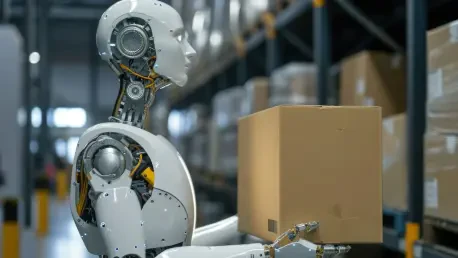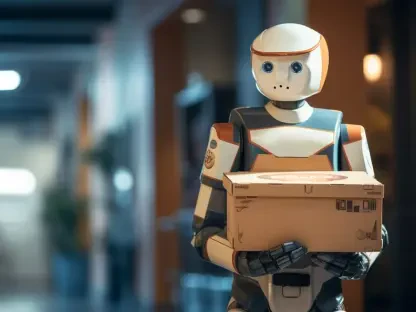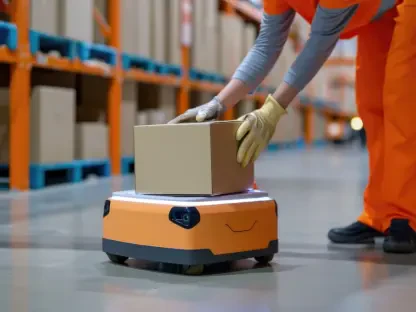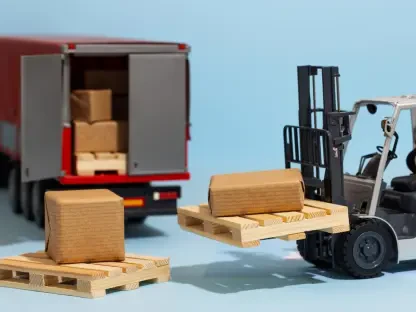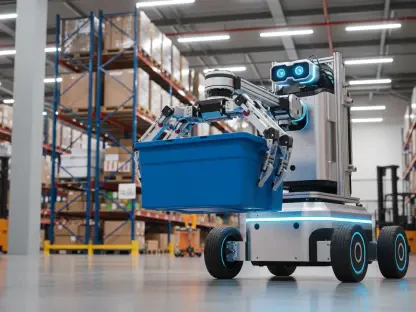In the fast-paced digital marketplace, e-commerce has transformed consumer buying behavior. Behind this online retail revolution lies a complex logistical challenge: efficient order fulfillment. As consumer expectations soar for faster deliveries, the e-commerce and OEM sectors grapple with operational bottlenecks. Enter AI-driven robotic pick and place systems: a technological leap promising to redefine warehousing dynamics. Notably, Sereact’s solution harnesses AI intelligence to optimize order-picking, ensuring precision and speed. This technology’s evolution not only addresses current logistical hurdles but also paves the way for more adaptive and resilient supply chains.
Advancements in AI-driven robotic pick and place systems have facilitated their integration into diverse industries, revolutionizing order-processing operations. Sereact has emerged as a frontrunner in this domain, particularly with its cutting-edge software that empowers robots to autonomously process and execute picking tasks. This involves a real-time comprehension of diverse environments, which enables intelligent decision-making during complex operations like handling fragile goods and optimizing space utilization. Together with various innovations, this technology is creating rippling effects across sectors, including retail, manufacturing, warehousing, and supply chain management.
Unpacking the Core Features
Real-Time Environmental Comprehension
A fundamental attribute of Sereact’s technology is its sophisticated real-time environmental comprehension. This pivotal feature allows robotic systems to assess and interpret dynamic environments quickly. It relies on sensors and advanced algorithms to recognize and classify items by shape, color, and texture—ensuring precise execution of picking tasks. The capability to function autonomously in unpredictable settings elevates operational efficiencies and minimizes the need for human intervention.
Real-time comprehension is transformative for automation, especially in scenarios where intricacy is unavoidable. It enables robots to detect anomalies, such as damaged or incorrectly positioned items, mitigating errors and enhancing process reliability. By integrating vision systems with machine learning, these robots adapt to new and unstructured situations, offering a glimpse of the potential evolution of artificial intelligence in robotics and its broad applicability across different sectors.
Adaptive Gripping Technology
Sereact’s adaptive gripping technology reflects another pillar of its robotic innovation. The hallmark of this technology is a patented gripper that adapts in real time to varied items’ sizes and weights, ensuring versatility in handling. This unique gripping system integrates suction cups and two-finger manipulators, guaranteeing precise and safe handling of both robust and delicate items—from fragile ceramics to flexible textiles.
Combining multiple gripping modalities marks a technological advancement that meets industrial needs. Adaptive grippers allow robots to efficiently manage diverse product portfolios, reducing downtime associated with changing tools and ensuring non-stop operation. This innovation signifies a crucial intersection of mechanical design and AI, driving the push for smarter, more efficient warehousing solutions.
Innovations and Industry Trends
The emergence of innovative models like the Vision Language Action Model signals significant paradigm shifts within automated order-picking practices. This model enhances robotic adaptability by allowing systems to comprehend instructions and take actions based on natural language communication. It simplifies integration into existing operational environments, making it accessible to users lacking advanced programming skills.
Innovative trends reflect an industry-wide movement toward automation not just to speed up processes but to streamline them. As businesses embrace AI-driven automation, the focus is shifting toward optimizing software interfaces that simplify user interactions. By complementing visual comprehension with linguistic interpretation capabilities, companies like Sereact pave pathways for broader adoption and adaptability in automation solutions.
Real-World Deployments
AI-driven robotic pick and place systems have found applications across numerous sectors, showcasing their robustness and flexibility. Major e-commerce giants and original equipment manufacturers are implementing these systems to improve inventory turnover and processing speeds. For example, retail warehousing benefits from reduced labor costs and substantially improved efficiency, as robots swiftly and accurately handle vast arrays of products.
Fascinating use cases extend beyond conventional warehousing to include sectors like quality assurance and returns management. In manufacturing contexts, automated robots enable seamless component assembly and automation, promoting a streamlined production process. The dynamic adaptability of these robots underlines their value as indispensable partners in contemporary logistic and manufacturing frameworks, enhancing the technological infrastructure across industries.
Overcoming Challenges
Technical complexities, regulatory hurdles, and market perceptions pose notable challenges to the widespread adoption of AI-driven robotic systems. Issues such as navigating varied regulatory environments and adapting for diverse operational needs can influence integration timelines and costs. Stakeholders must consider both the technical and human elements to foster acceptance and seamless transitions.
On the technical front, ongoing efforts focus on reducing system complexity while enhancing functionality. Innovations aim to simplify the user experience, providing intuitive interfaces that facilitate seamless human-robot collaboration. By addressing and surmounting these hurdles, stakeholders ensure the broad implementation of these systems across industries and geographies.
Path Forward and Emerging Possibilities
The trajectory of AI-powered robotic pick and place systems points toward a transformative future. Possibilities lie in enhancing cognitive capabilities, allowing further integration into sophisticated operations like automated quality assessments and intricate machining tasks. Anticipated breakthroughs include even more refined algorithms, enhanced real-time processing, and wider adaptability for specialized industrial needs.
Future developments hold promise for revolutionizing warehousing, inventory management, and product handling on unparalleled scales. As industrial reliance on AI-driven technologies expands, we anticipate more intelligent, multifaceted systems capable of seamlessly integrating and optimizing varied operational frameworks. Embracing these innovations will undeniably reshape the contours of technological advancement in logistics, setting foundations for ongoing transformation in both business practices and societal norms.
Final Assessment
This review unveiled how Sereact’s innovative AI-driven robotic pick and place technology tackled logistical challenges in contemporary e-commerce. Sereact’s system redefined automation with features like real-time environmental comprehension and adaptive gripping technology, setting a precedent for intuitive, dynamic robotics. Notable were the practical applications, sophistication in overcoming operational obstacles, and expansive potential the technology exhibited.
Looking ahead, as automation evolves, smart robotics will likely dominate supply chain management and beyond. Although adoption challenges persisted, ongoing innovation aims to bridge technical and operational gaps, ensuring broader applicability and acceptance. Sereact’s technological prowess positions them as leaders in the robotics revolution, promising to leave an indelible imprint on industry landscapes.
